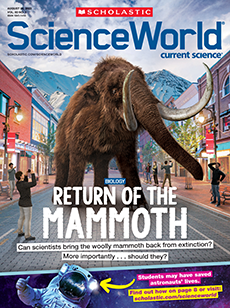How do wildfires start?
All fires need three things to start: heat, fuel, and oxygen. Any material that can burn is a fuel. This includes plants, plastic, fabric, wood, oil, and so on. Intense heat causes the fuel to combine with oxygen in the air and undergo combustion, the process of burning. We’re surrounded by fuel and oxygen. Heat can come from a lightning strike, a match, a spark from a campfire, or other sources. As more fuel gets hot and burns, the fire spreads.
How do you study wildfires in A lab?
We do experiments with fire in a metal warehouse called a burn chamber. The chamber has tools to adjust the conditions inside. It’s like controlling the weather. We can set the temperature and amount of moisture in the air. We can make it hot, cold, dry, or windy. I use these tools to investigate how things catch fire and how they burn in different conditions. To stay safe, I wear gloves, a mask, and cotton clothing that won’t melt onto my skin if it gets too hot.
Many types of experiments happen at the lab. Some scientists study how trees respond to fire. Others study the smoke. Then a team puts together all the research and comes up with safety recommendations. Then public officials share these conclusions and safety recommendations out to the public.
What type of research do you do?
One area I’m interested in is how fire spreads through piles of pine needles. I want to understand how the shape of a pile affects how air flows around it. This can affect how fast a fire burns.
I often use wooden sticks instead of real pine needles. The sticks are easier to measure and observe. I glue them into different shapes and set them on fire. Then I observe how long they burn and how high the flames reach. I repeat each experiment up to five times. If I get similar results each time we do the test, then I know the data is probably accurate.

